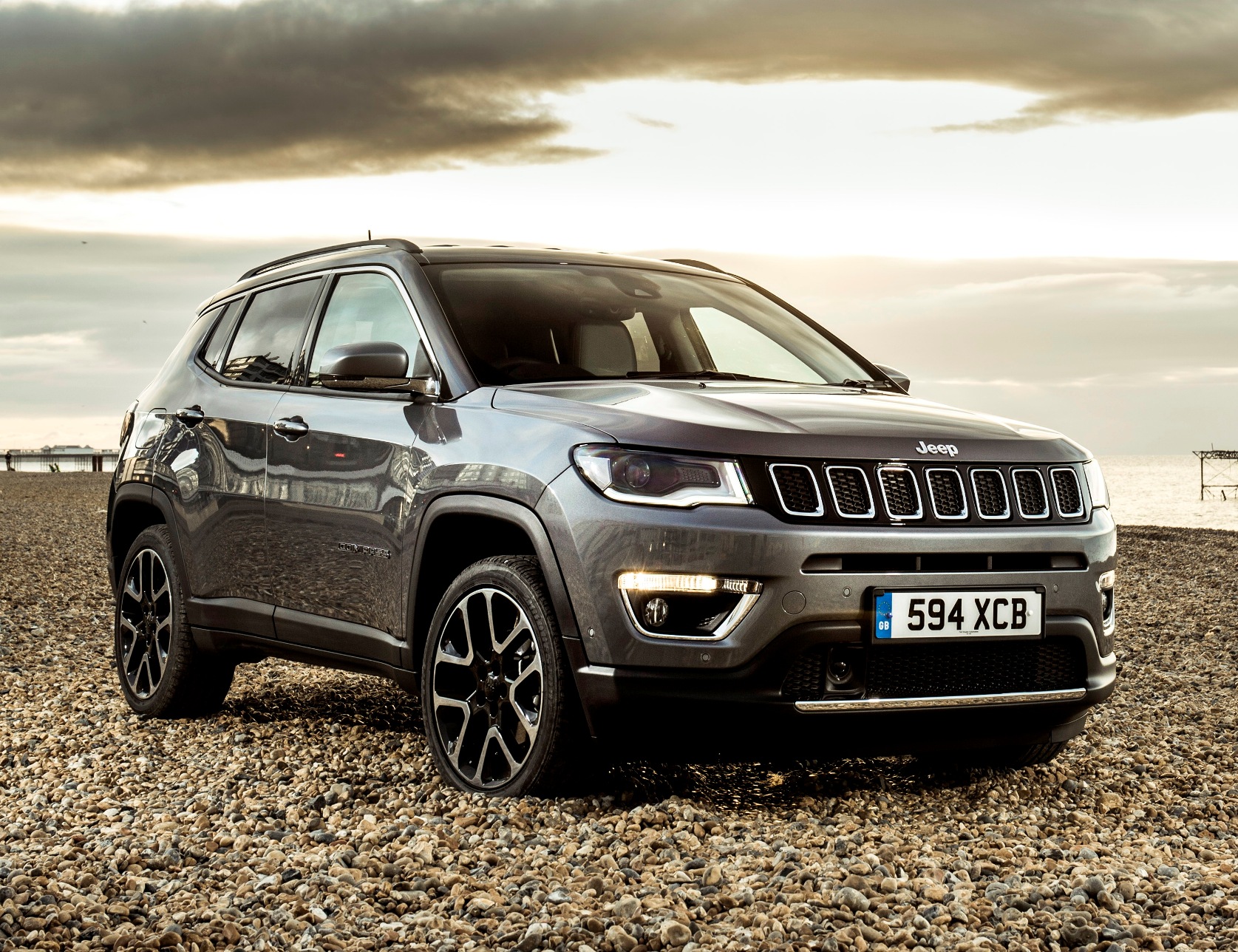 JEEP’S COMPASS SHOULD BE HEADING IN THE RIGHT DIRECTION…
JEEP’S COMPASS SHOULD BE HEADING IN THE RIGHT DIRECTION…
…says David Miles (Miles Better News Agency).
On paper the new Jeep Compass compact SUV has all the elements for it to be heading in the right direction in terms of size, five star safety equipment, five year warranty, inclusive specifications and some competitive prices in a fast growing SUV market.
The second generation Jeep Compass arrived in the UK in February this year. It is positioned in the Jeep range between the compact Renegade and the larger Cherokee models. The original boxy Compass was first sold in the UK in 2007 and facelifted in 2011 before departing UK showrooms in 2015.
Now the new Compass faces even stronger and more numerous competitors than it did when it arrived a year ago. The core competitors are still the Nissan Qashqai which leads overall SUV/Crossover sales in the mid-sized C-SUV sector where the Compass is positioned. It also has to compete against the award-winning Peugeot 3008, very popular new Kia Sportage, SEAT Ateca, Skoda Karoq, Ford Kuga, Mitsubishi Eclipse Cross, Toyota RAV4, Suzuki Vitara, Volvo XC40 and VW Tiguan, to name but a few…
Now part of the FCA, Fiat Chrysler Automobiles, the Jeep Compass shares many of the components of the Fiat 500X SUV and an extended version of the platform from the smaller Jeep Renegade SUV range. In its performance, dimensions and safety specification it is much more European in its nature, although built in India, than previous hard-core off-roader American iron. But in true Jeep fashion the specification is high and there are two and four wheel drive models with Fiat sourced petrol and diesel engines and a relatively wide choice of specification levels. Prices range from £23,355 through to £35,595.
When it comes to engine choices the range consists of two petrol and three diesel engines. The petrol engine offerings include a 1.4 litre MultiAir II Turbo engine with Stop&Start delivering 140 hp at 5,000 rpm and 230 Nm (170 lb.ft) of torque at 1,750 rpm in combination with the six-speed manual gearbox and 2WD configuration, and the 1.4 litre MultiAir II Turbo engine producing 170 hp at 5,500 rpm and torque of 250 Nm (180 lb.ft) at 2,500 rpm, paired with a nine-speed automatic transmission and 4WD.
The turbodiesel engine range comprises of the 1.6 litre MultiJet II with Stop&Start, delivering 120 hp at 3,750 rpm and 320 Nm 236 lb.ft) of torque at 1,750 rpm, paired to the six-speed manual gearbox and 2WD, the 2.0-litre MultiJet II with Stop&Start delivering 140 hp at 3,750 rpm and 350 Nm (258 lb.ft) of torque at 1,750 rpm with a six-speed manual transmission and with 4WD. There is also a 170 hp version of the same engine with 380 Nm (280 lb.ft) of torque and the nine-speed automatic gearbox and 4WD traction, and that is the version I am trying for this road test, with the Limited spec option and priced at £34,925.
There are four specification levels depending on the engine chosen. These are Sport, Longitude, Limited and the new addition Trailhawk. The latter model is available only with the 2.0 litre 170 hp diesel engine and nine-speed auto gearbox, but because of its hard-core off-roading nature it also has a low ratio transfer box.
The Sport version’s standard equipment includes 16-inch alloy wheels, LED tail lights, leather steering wheel with audio controls, air conditioning, cruise control, forward collision warning and 60/40 rear seat split.
The Longitude specification adds 17-inch alloy wheels, front fog lamps, Parkview reverse camera, Apple CarPlay and Android Auto functionality, 8.4-inch audio and navigation, electric lumbar support, dual zone climate control and keyless entry and go.
Limited spec equipment includes 18-inch alloy wheels, halogen projector headlamps, silver roof rails, privacy glass, leather power and heated seats, windscreen wiper de-icer, heated steering wheel, rain sensitive wipers, Parkview reverse camera, Parksense front and rear park assist system, blind spot and cross path detection, and parallel and perpendicular park assist.
Trailhawk equipment includes halogen projector headlamps, privacy glass, front and rear off-road bumpers, raised off-road suspension, front and rear skid plates, 8.4-inch audio and navigation, leather power and heated seats, 60/40 folding rear seat with boot pass-through, heated steering wheel, all-season floor mats, Parkview reverse camera, Parksense front and rear park assist system, blind spot and cross path detection, hill descent and Rock transmission mode.
All versions have a 5-star Euro NCAP safety rating because of the 70 plus active and passive safety and security features. These include Forward Collision Warning-Plus, LaneSense Departure Warning-Plus, Blind-spot Monitoring and Rear Cross Path detection, ParkView rear backup camera with dynamic grid lines, Automated Parallel and Perpendicular Park Assist, Adaptive Cruise Control, electronic stability control (ESC) with electronic roll mitigation and six standard air bags.
The mid-sized SUV Compass is 150 mm (about six inches) longer than the Jeep Renegade models, giving it a longer wheelbase and an extended load area section. It is 4,394 mm (14.42 ft) long, 1,820 mm (5.97 ft) wide and 1,644 mm (5.93 ft) high. There are 438 litres (15.47 cu.ft) of boot space and a maximum load space of 1,693 litres (59.79 cu.ft) with the rear seats folded.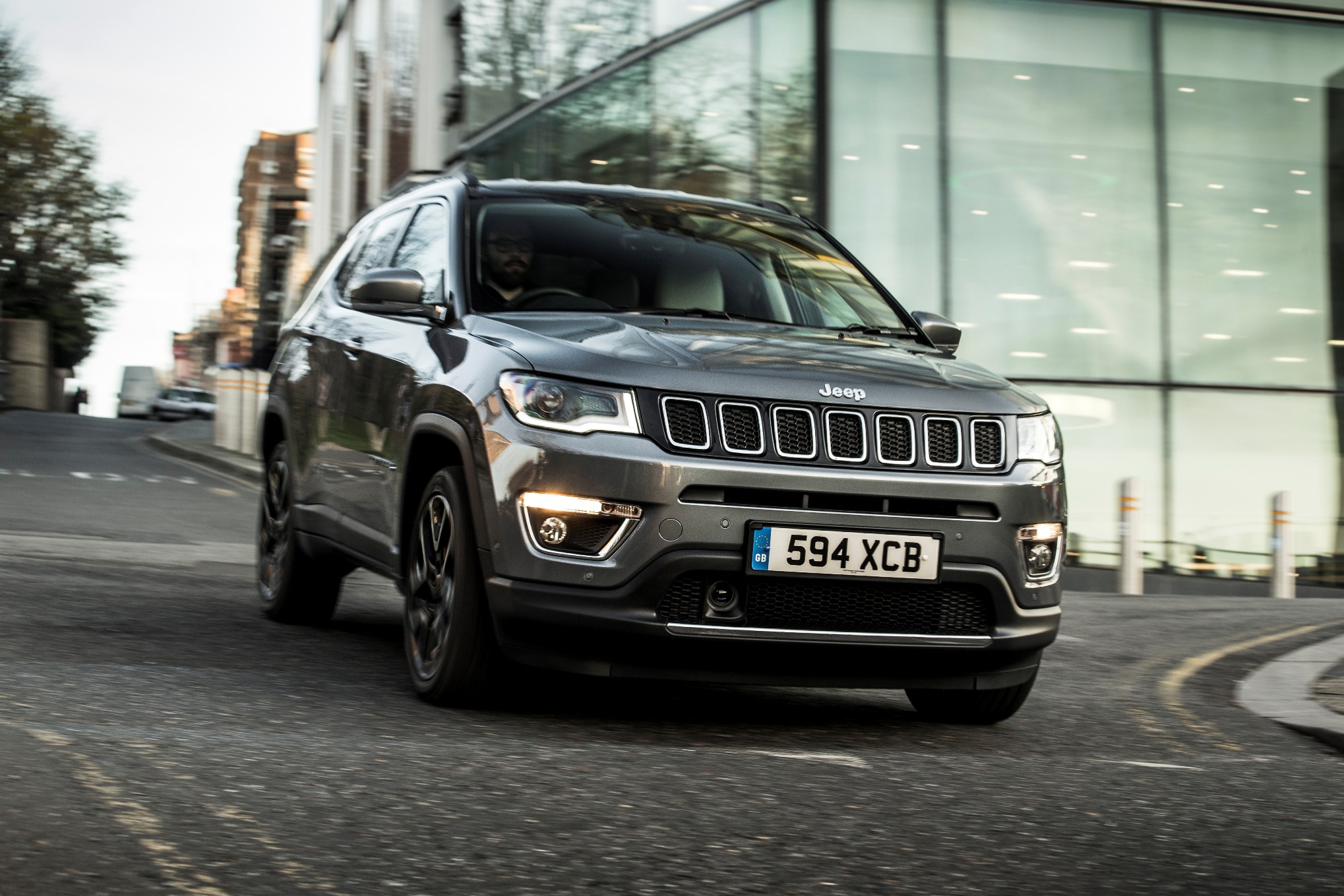 Not forgetting its long 75 year Jeep heritage, styling wise the Compass has the traditional seven-slot Jeep front grille, heading up a far more European style sculptured and curved body shape rather than the previous American ‘boxy’ designs. There are large trapezoidal shaped wheelarches which add to the vehicle’s off-roading credentials, and with its trade-mark Jeep front end design these features marginally set it apart from other mid-sized SUVs in this over-populated market sector. It looks a well proportioned vehicle.
Not forgetting its long 75 year Jeep heritage, styling wise the Compass has the traditional seven-slot Jeep front grille, heading up a far more European style sculptured and curved body shape rather than the previous American ‘boxy’ designs. There are large trapezoidal shaped wheelarches which add to the vehicle’s off-roading credentials, and with its trade-mark Jeep front end design these features marginally set it apart from other mid-sized SUVs in this over-populated market sector. It looks a well proportioned vehicle.
Inside it is very much a Jeep with its large fascia panel with its trapezoidal shaped centre stack housing the touchscreen, and below that a cluster of switches and other controls which took time to fathom out. There is also the usual Jeep style chunky thick-rimmed steering wheel, again with multi-function buttons. The seats are big and comfortable, the door/armrest well padded and it all looks well put together with lots of soft-feel plastic trim and leather upholstery on my Limited test version. Being a Jeep with 4WD of course there is a rotary turn control to select the correct driving mode ranging from Auto through various stages of Snow, Sand and Mud plus a 4WD Lock settings. There can be no complaints about the amount of equipment the Limited spec level offers but it comes at a hefty price.
The ride quality is on the softer side compared with some mid-sized SUVs, due in part to the longer suspension travel used to complement its potential for off-road travel. That caused some body roll during cornering. However my test version was fitted with the £700 optional larger 19-inch wheels and they didn’t cope so well with impacts from potholes and coarser areas of tarmac, so staying with the smaller 17 or 18-inch alloys would be my choice. The steering response seemed on the light side with no varying in weight, so there was little feedback – and it followed the ‘lazy’ on-road handling characteristics this model gives.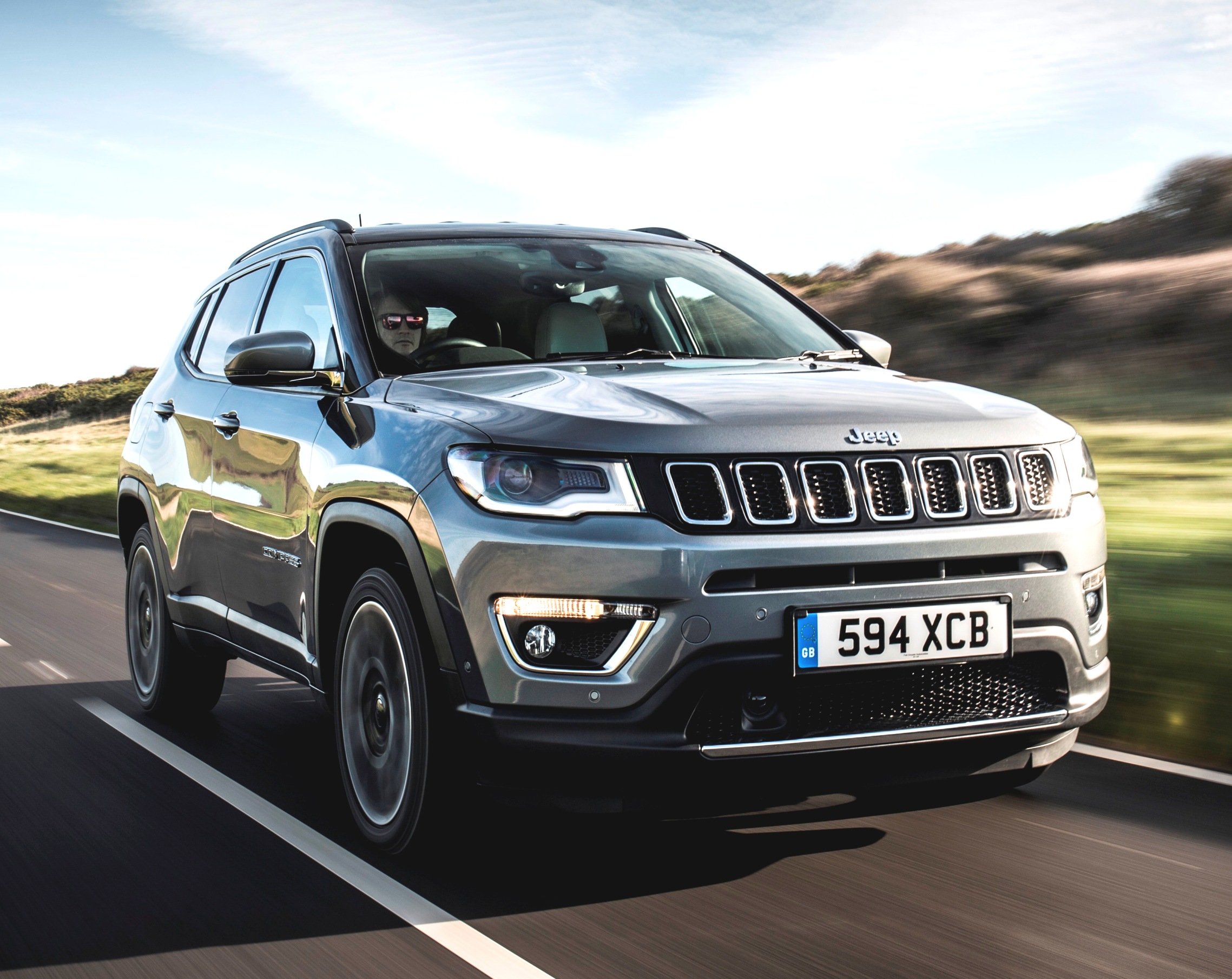
The Fiat 2.0 litre, four cylinder MultiJet II turbodiesel engine with 170 hp was not available when I attended the media launch ahead of the new Compass going on sale in the UK so that is the unit I tried recently. It’s not the quietest or smoothest of engines compared to some other models in this category; let’s just say it’s characterful. With 380 Nm (280 lb.ft) of torque available at 1,750 rpm it’s strong with a linear power delivery so it provides flexibility when driving in stop/start traffic and accelerates with reasonable pace once underway on more open roads. A brief off-road excursion proved this unit is quite capable chugging along at low rpm speeds and never running out of ‘grunt’ for climbing steep gradients. The lower ratios in the nine-speed auto gearbox are well suited for off-road work but the changes between gears during acceleration were slow, again part of its ‘lazy’ performance.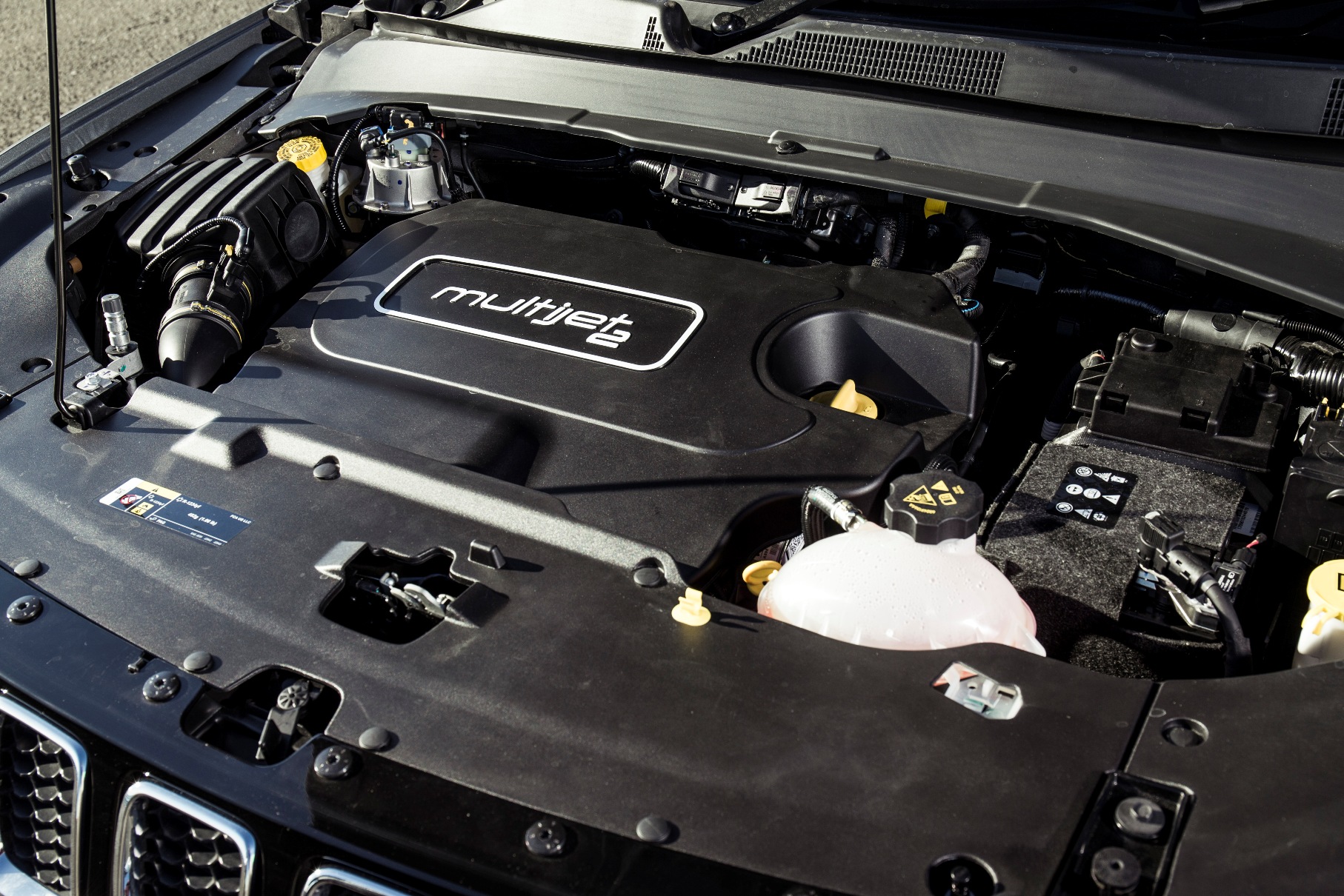
Top speed is 122 mph with zero to 62 mph taking 9.5 seconds; acceptable performance but no better than that.
The official Combined Cycle figure is 49.6 mpg and my week of on-road driving returned only 38.7 mpg, just about acceptable but not class-leading or close enough to the official Combined Cycle figure.
The CO2 emissions are 148 g/km so First Year diesel rate VED road tax is £515 and then £140 Standard rate from year two onwards. Company car drivers will pay 34% Benefit-in-Kind tax and insurance is Group 23E. Good news is that Jeep now offer a five years/75,000 miles warranty.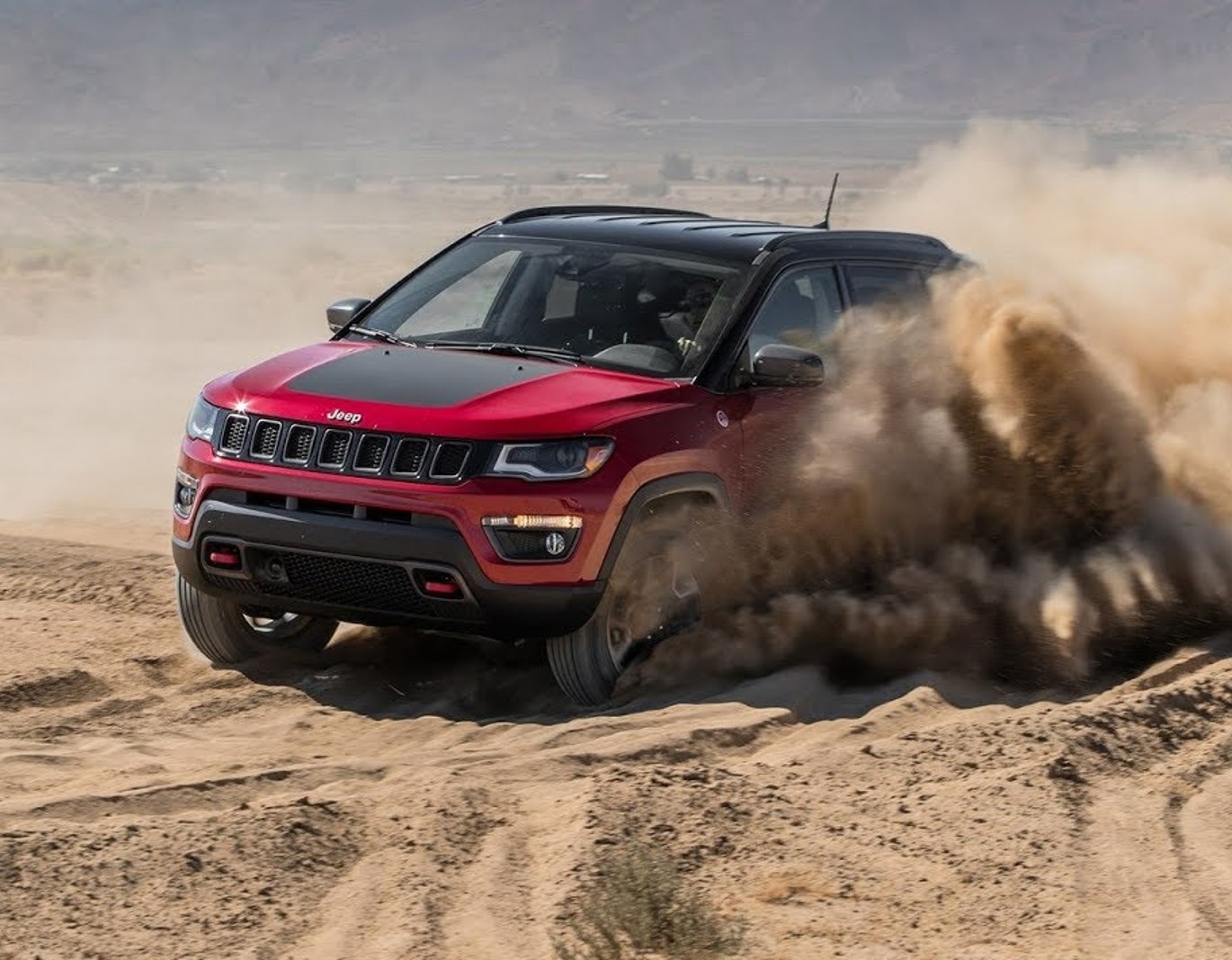
VERDICT
In a packed marketplace, the distinctive Compass is deliberately going its own way, and will appeal to many potential buyers because of that.
For: Distinctive and iconic front end Jeep signature design, high ground clearance body design fit for off-road use, very capable off-road performance, high safety equipment and driving support systems, well-equipped overall, roomy, comfortable and practical, new five year warranty.
Against: Noisy diesel engine, slow-changing auto gearbox, lazy on-road handling with minimal steering feedback, real-life fuel economy was too far away from the official figure, high First Year road tax and BiK costs, less powerful and lower spec 2WD models in the range look better value choices unless 4WD is a ‘must’.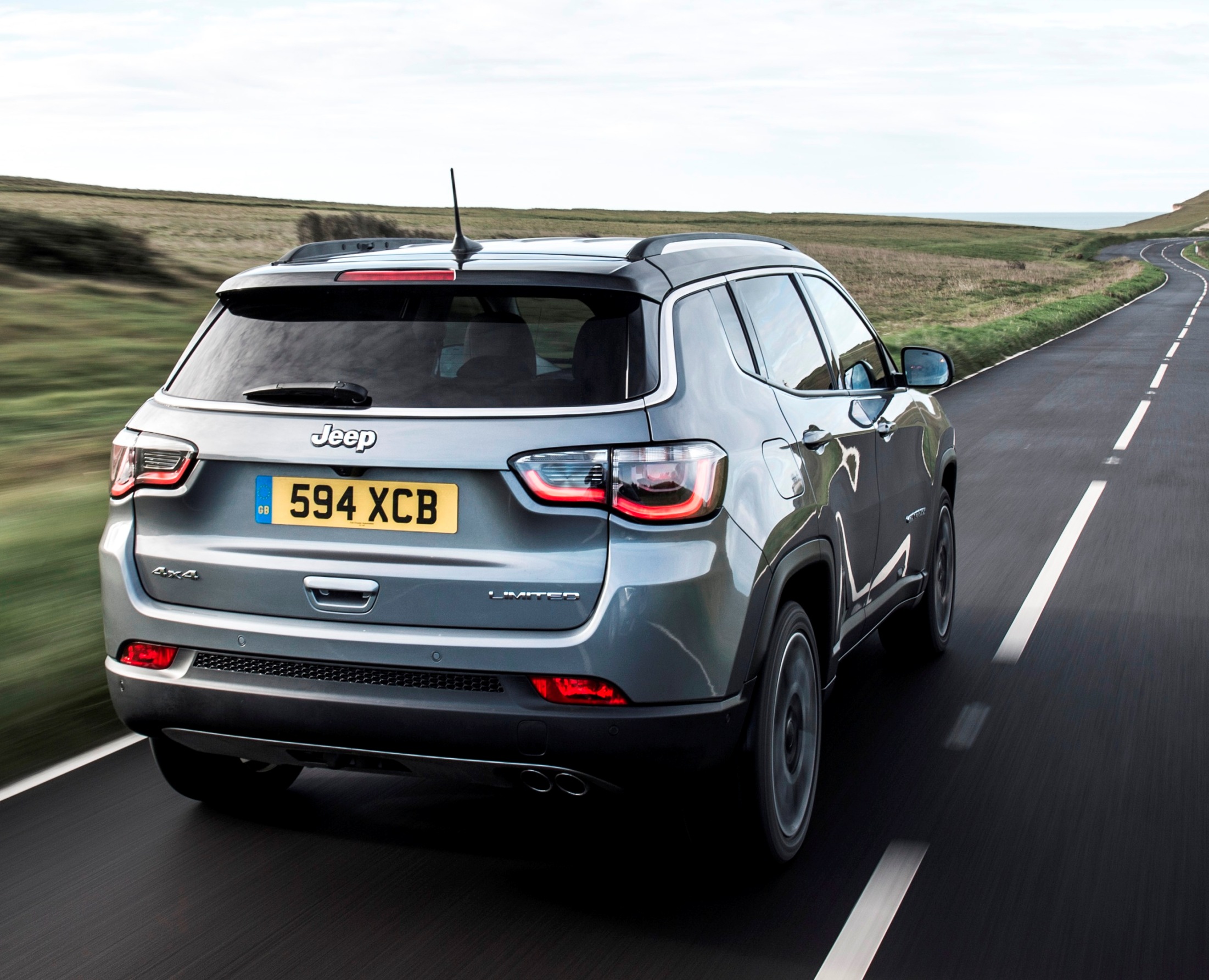
Milestones and Wheels-Alive Tech. Spec. in Brief:
Jeep Compass Limited 2.0 MultiJet II 170 hp, 4WD automatic.
Price: £34,925.
Engine/transmission: 2.0 litre, four cylinder MultiJet turbodiesel 170 hp, 380 Nm (280 lb.ft) of torque from 1,750 rpm, nine speed auto, 4WD.
Performance: 122 mph, 0–62 mph 9.5 seconds.
Fuel consumption: Combined Cycle 49.6 mpg (38.7 mpg on test).
Emissions and taxation: CO2 148 g/km, VED First Year diesel rate tax £515 and then £140 Standard rate, BiK company car tax 34%.
Insurance Group: 23E.
Warranty: Five years/70,000 miles.
Dimensions/capacities: L 4,394 mm (14.42 ft), W 1,820 mm (5.97 ft), H 1,644 mm (5.93 ft), wheelbase 2,636 mm (8.65 ft), boot/load space 438 to 1,693 litres (15.47 to 59.79 cu.ft), braked towing weight 1,500 kg (3,307 lb), five doors/five seats.